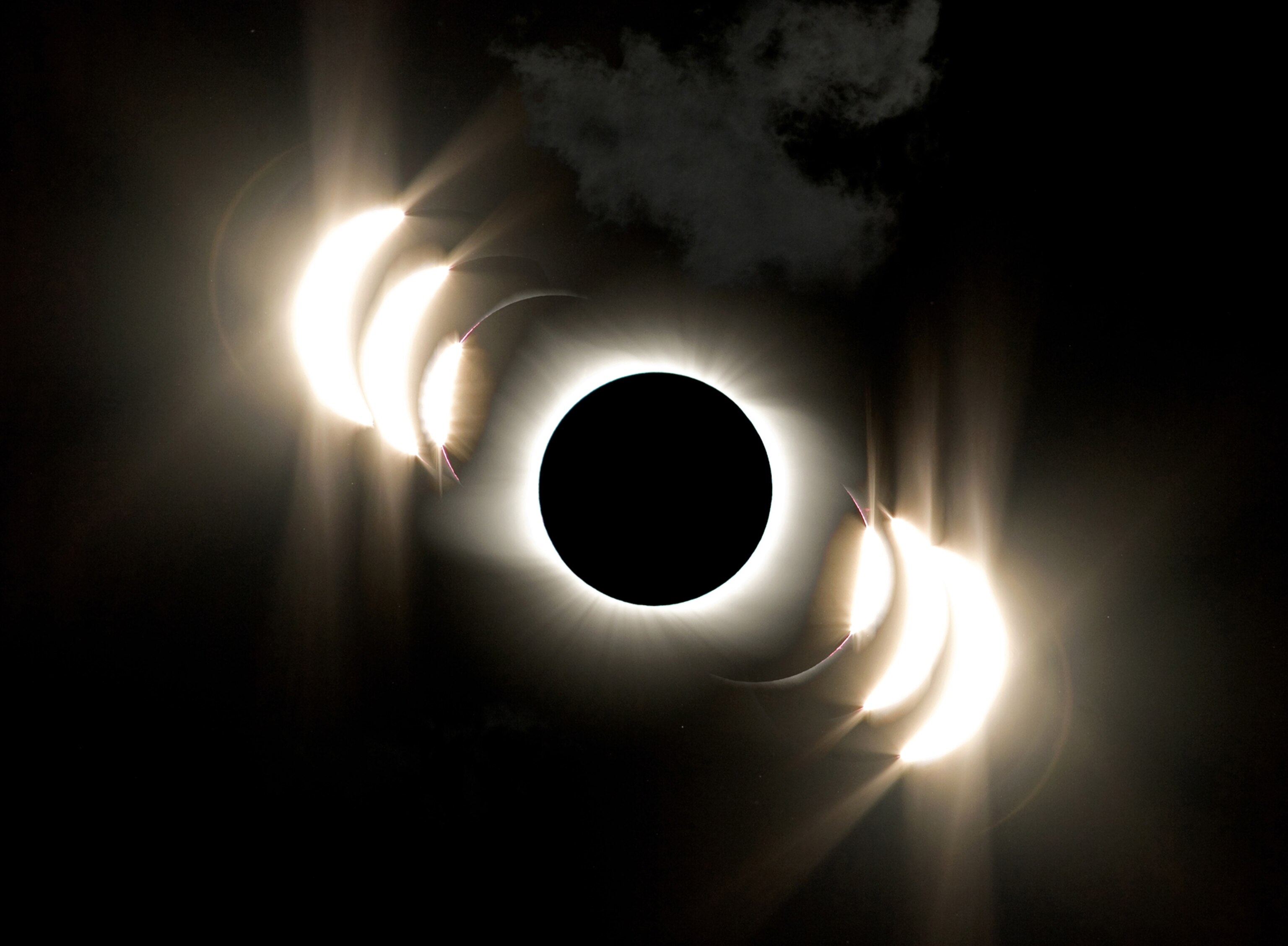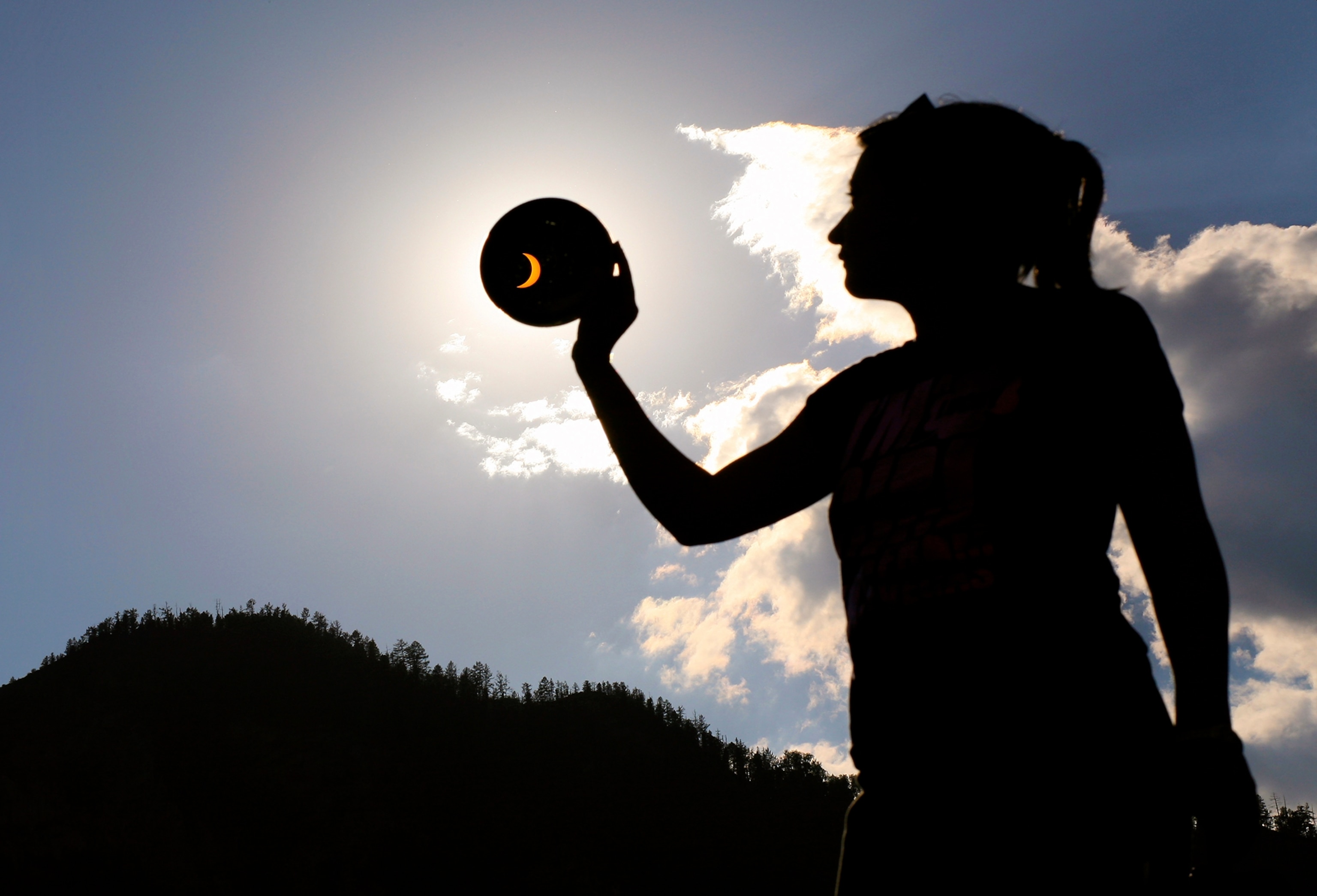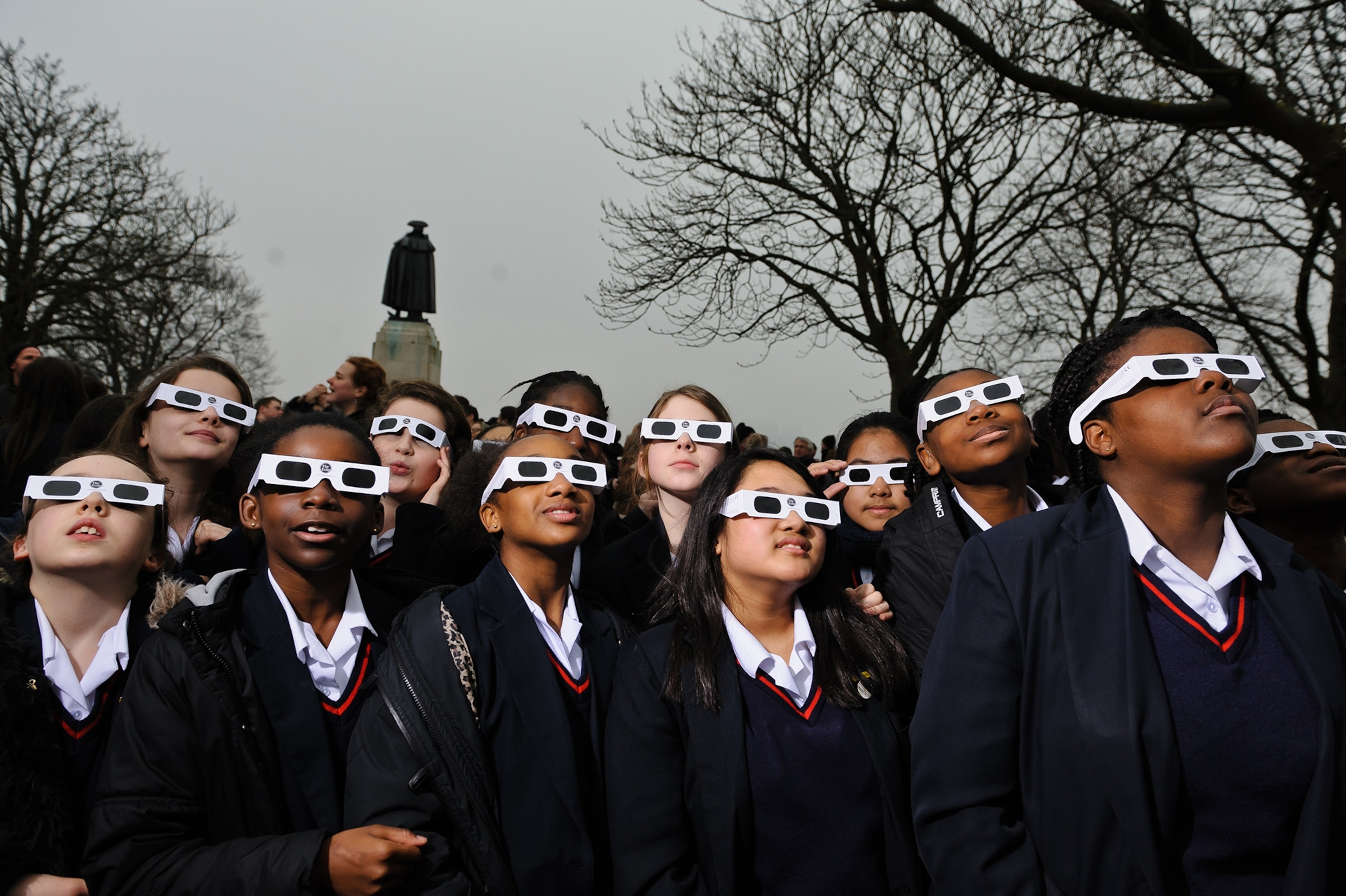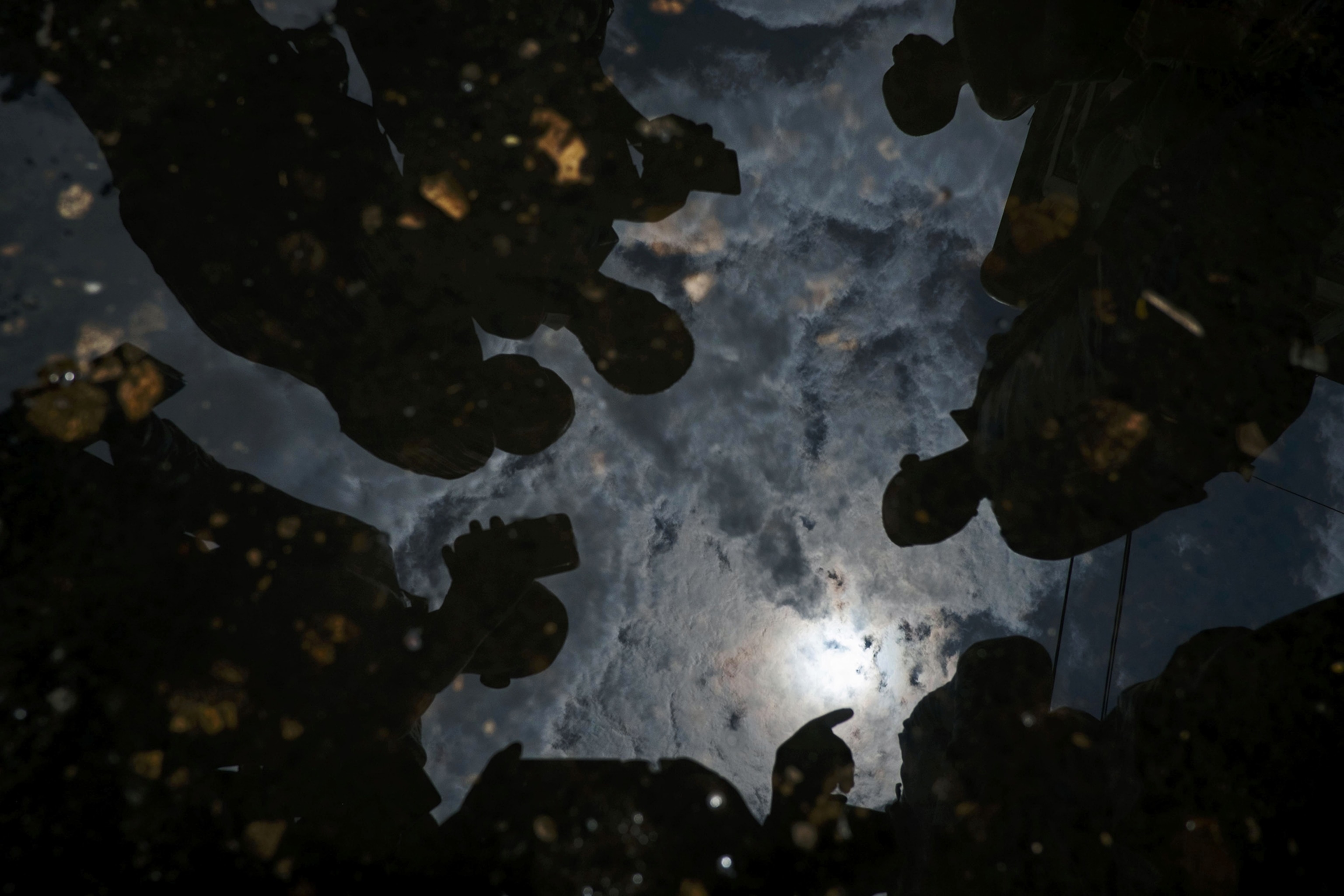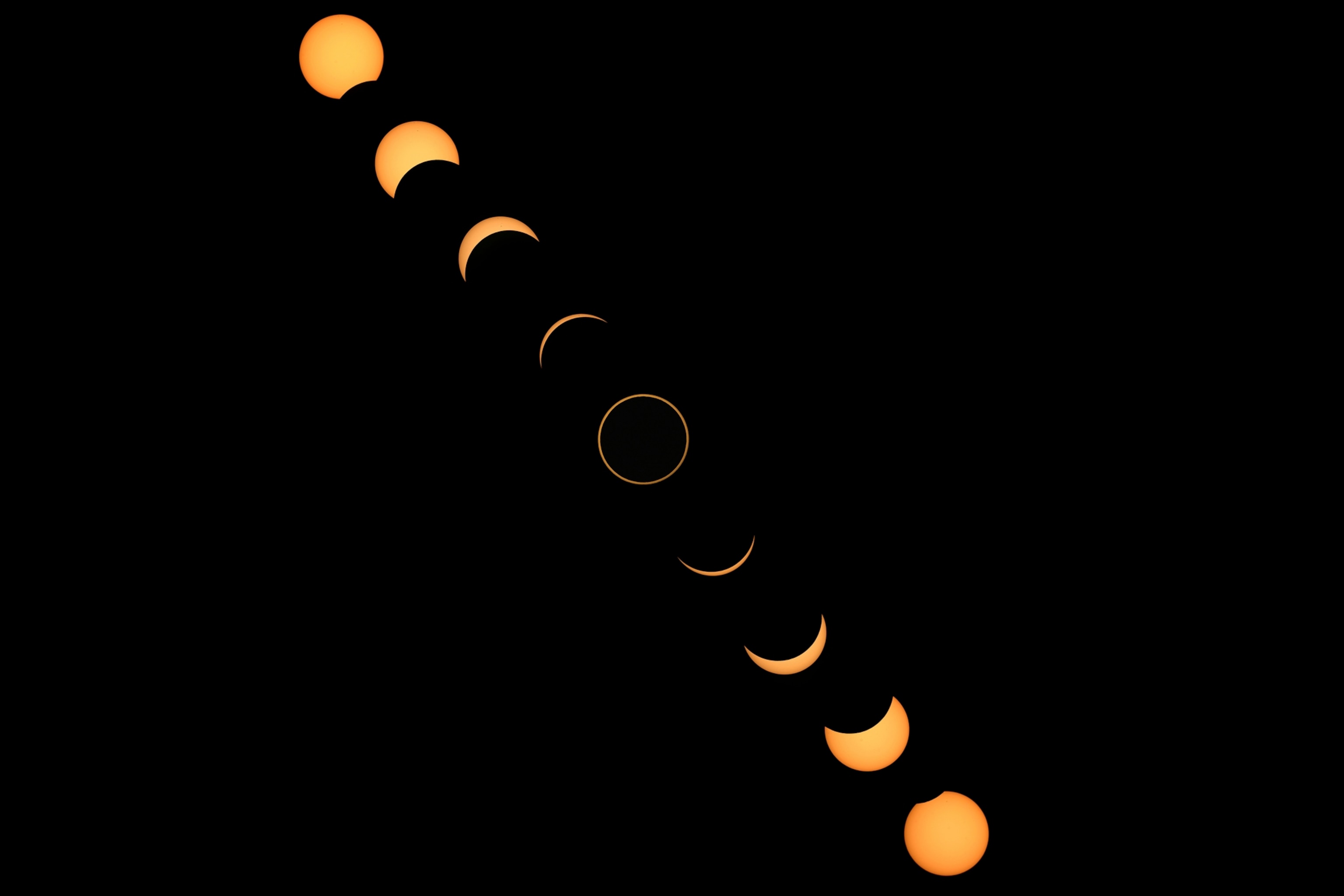How to Watch the Total Solar Eclipse From Anywhere
Tune in here to see the full glory of totality no matter where you are.
The best solar eclipse in a century is finally here.
A record number of people have flocked to a 70-mile-wide swath of the United States to witness an historic total solar eclipse. Millions more across the Americas are watching a partial eclipse just by stepping outside.
But people in other countries or folks stuck indoors can still watch events unfold on August 21 from the comfort of their own homes, thanks to various live eclipse feeds.
The astronomy education group Slooh is offering access via their robotic telescope network, which is providing live feeds from cameras across the United States pointed at the sky in the path of totality—the relatively narrow zone stretching from Oregon to South Carolina where the entire face of the sun is perfectly covered by the moon.
NASA is also providing a live stream featuring coverage from 12 locations on the ground, as well as views from research planes, high-altitude balloons, and satellites.
Totality started in Lincoln City, Oregon, around 1:15 p.m. ET and will end in Charleston, South Carolina, at 2:48 ET. That gives viewers roughly one hour and 30 minutes to watch the full eclipse cross the entire continental United States. (Read more about how to see the best solar eclipse in a century.)
Can you still see an eclipse outside of totality?
Yes, you can see the eclipse, but the moon is only partially obscuring the sun. The closer you are to the path of totality, the more you will see the sun covered by the moon during the peak of the eclipse. (Explore our map of where to see the eclipse.)
How rare are total solar eclipses?
Even though this is the first solar eclipse since 1918 to go coast to coast in the United States, there is a total solar eclipse somewhere in the world about every 18 months.
How long does an eclipse last?
During this eclipse, totality will last for more than two minutes, depending on your location. But due to the orbital properties of Earth, the moon, and the sun, the longest an eclipse can last is about 7.5 minutes. This will happen next on July 16, 2186. (Take our solar eclipse quiz.)
Should you look at the sun during a solar eclipse?
Never look directly at the sun without proper eye protection. Even during a total eclipse, the only time it is safe to look at the sun with your naked eyes is during the few brief moments of totality. For anyone watching live, stay safe with special glasses and camera filters designed for eclipses.
When is the next total solar eclipse in the United States?
If you wanted to see a total solar eclipse over the United States but didn't get to this one, you’ll have to wait about seven years: The next path of totality will sweep northward from Texas to New England on April 8, 2024.



